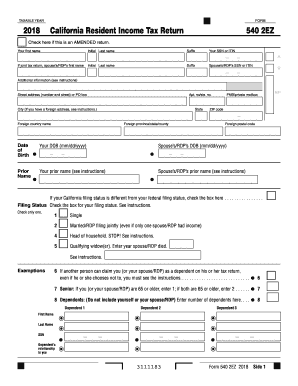

The top 1 percent of households accounted for 21.5 percent of income in 2017, compared to only 9 percent in 1970. In the early 2000s, policymakers began looking at targeted rate increases for affluent households to help close stubborn budget shortfalls stemming from the 2001 recession, as well as to respond to the increasingly skewed concentration of wealth and income at the top. But as of 2000, only five states had top rates kicking in above $100,000.

California levied a temporary 11 percent rate on incomes above about $200,000 from 1991 to 1996, and in 1992 Ohio created a new bracket on incomes above that same level. Prior to the 2000s, however, special brackets or rates targeted specifically to the highest incomes were relatively uncommon. Although some states apply a flat rate to all taxable income, most states with a personal income tax maintain a graduated structure that applies increasing rates to increasing levels of income. The personal income tax is a major source of revenue for 41 states.

As a pair of university researchers described in a comprehensive literature review in 2018, “The vast majority of the academic studies that examined the relationship between state and local taxes and economic growth found little or no effect.” Fifteen of the 20 major studies published in academic journals since 2000 that examined the broad economic effect of state personal income tax levels found no significant effects and one of the others produced internally inconsistent results.

Evidence indicates that sustained support for public building blocks of growth can help states improve their residents’ well-being, expand opportunity and racial equity, and build more prosperous economies over time. Raising personal income tax rates has allowed states to prevent or minimize harmful budget cuts or invest in ambitious new initiatives such as expanding early education, boosting access to college, improving infrastructure, and strengthening “rainy day” funds to prepare for the next recession. High-income tax increases can generate substantial revenues for investments in people and communities that provide economic and social benefits over the long term.One way to raise the necessary funds is to raise personal income tax rates on the highest incomes, a policy choice sometimes referred to as a “millionaires’ tax. One way to raise the necessary funds is to raise personal income tax rates on the highest incomes, a policy choice sometimes referred to as a “millionaires’ tax.” This approach makes sense: evidence indicates it can generate substantial revenue for public investments that boost a state’s productivity in the long run, without harming economic growth in the short term. Policymakers in several states are reviewing options to strengthen support for public investments crucial to state economies and residents’ well-being, such as quality early education, affordable college, and modern infrastructure.


 0 kommentar(er)
0 kommentar(er)
